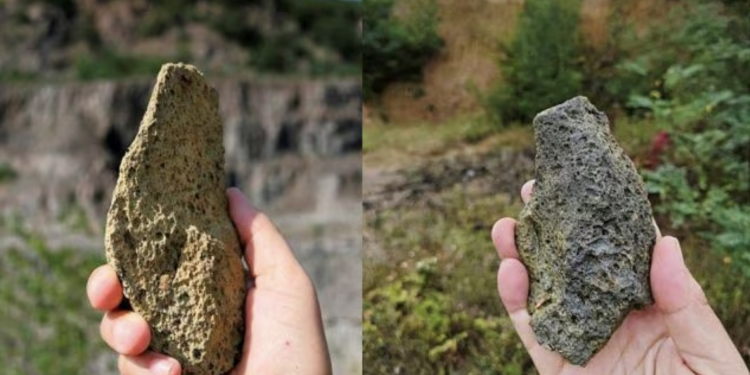In the vas expanse of western Ukraine, nestled within the archaeological treasure trove of Korolevo, lies evidence that reshapes our understanding of early human history in Europe. A groundbreaking study has unearthed stone tools dating back to an astonishing 1.4 million years ago, marking the oldest known evidence of human presence on the continent. This revelation, however, comes with a twist: the creators of these tools were not our species, Homo sapiens, but rather a close, now-extinct relative, challenging our perceptions of early human migration and ingenuity.
Europe’s Earliest Stone Tools found in Korolevo
These artifacts, characterized by their primitive Oldowan style, bear witness to the capabilities of early hominins, a group encompassing both modern humans and their closest extinct kin. The findings at Korolevo, including choppers unearthed from beneath layers of river sediment and wind-blown dust, suggest that the architects of these tools were likely Homo erectus. This species, emerging in Africa about 2 million years ago, ventured far beyond its birthplace, spreading to Asia and Europe, showcasing a remarkable adaptability and adventurous spirit.
A Technological and Methodological Leap
The precise dating of these tools was made possible through the innovative use of cosmogenic nuclide burial dating, a technique that measures cosmic rays’ effects on buried rocks. This method has brought clarity to the chronology of early human presence in Europe, a topic that has long captivated researchers. The significance of the Korolevo site is further underscored by its geographical positioning, serving as a northern marker of Homo erectus’s range and hinting at the possibility of even more distant sites awaiting discovery.
The tools’ age not only confirms theories about the direction from which Europe was initially colonized but also illuminates the adaptability of early hominins. Situated between key sites in Asia and Europe, Korolevo offers compelling evidence of a westward migration from Ukraine across the Pannonian Basin into central Europe. However, the narrative of an east-to-west expansion remains open to revision, pending discoveries that could rewrite the timeline of human migration into Europe.
Adaptation Across Ages: Survival in a Varied Climate
The Korolevo site, active during periods of significant warmth known as interglacials, reveals the resilience and versatility of early hominins. These ancestors thrived in a region marked by seasonal variability, demonstrating behavioral flexibility that challenges previous assumptions about their adaptive capacities. Such findings underscore the complexities of early human life and the myriad ways in which our forebears navigated the ancient world.
This study does more than just push back the date of human presence in Europe; it enriches our narrative of human history, highlighting the ingenuity and resilience of our ancestors. The oldest stone tools in Europe serve as a testament to the enduring spirit of exploration and adaptation that has defined the human lineage. As we continue to uncover the layers of our past, we gain not only a deeper understanding of where we come from but also a glimpse into the qualities that have enabled humanity to thrive across millennia.











